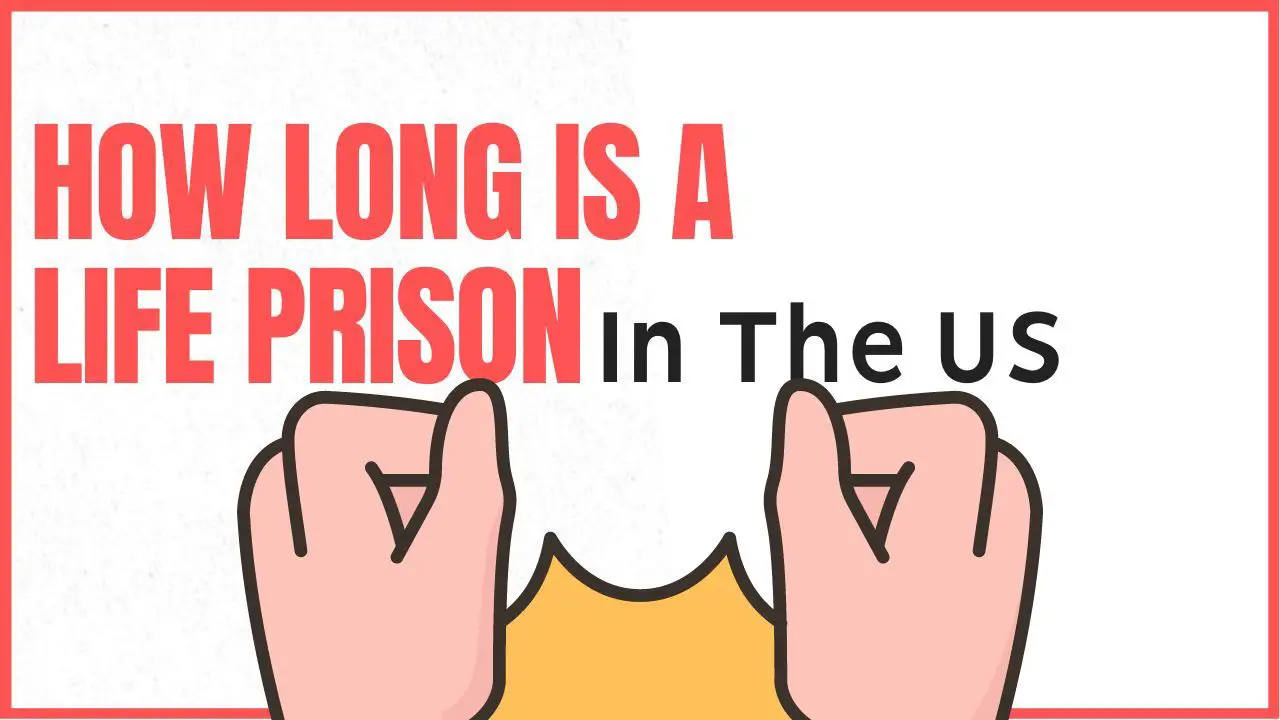How Long is a Life Sentence In the US?
How Long is a Life Sentence In the US? How long is a life sentence in the US with Parole? we have discussed everything related to life imprisonment in the US.

Life sentence or life imprisonment is one of the most severe punishments in the judicial system of the United State of America. Depending upon the state, a life sentence is second only to the death penalty as the most severe punishment. Due to this, offenders given a life sentence are those who have committed a serious crime and were subsequently found guilty of it.
The life imprisonment rate in the United States is also one of the highest. According to data put forward in a 2013 study, over 1 of every 2000 inhabitants were imprisoned for life. Offenders who have been awarded a life sentence will serve it in either state prison or federal prison, depending upon the nature of their crime.
What are the common life sentences in the US and how long is a life sentence?
Globally, there are multiple kinds of life sentences that are given depending upon each of the sovereign’s laws. However, in the US, they are divided mainly into two parts which are:
1. Determinate Life Sentence:
This is the kind of life sentence where there is no way to shorten the sentence. The offender will have to serve their time, no matter what. The offenders cannot under any of the circumstances be released for parole, any kind of good behavior, or any other reason. They are to serve their time regardless of whatever the conditions might appear.
There are times when a sentence can allow for parole, however, that happens when the offender has served the main time frame i.e. if an offender is awarded a life sentence of 25 years, they will have to serve 20 years without parole, and the next 5 years with a possibility of parole.
2. Indeterminate life sentence:
This is the type of life sentence where there is a possibility of the offender being released on parole.
In most cases, offenders will get parole by exerting good behavior in prisons which includes not getting involved in fights, giving their time for community service, and making the best of the prison’s programs so that once they are released they may become active and a dedicated member of the society.
What is a Parole in the US?
Parole can be best defined under the US judicial system as a temporary or permanent release of an imprisoned person before the end of their sentence. There are different types of parole, however, in the case of a life sentence, parole comes before the end of the sentence’s maximum term.
Oftentimes it is considered that parole is a release or a pardon. That is not the case since the person is still serving their sentence; even if they are not in jail, they still have many limitations on what they can do in society, who they can meet, and where they can apply for jobs among a few others depending upon the person’s crime. There are travel restrictions as well because, on parole, an offender is not allowed to leave a certain distance from their home.
A Parole Officer or a Parolee is assigned to an offender who is released on Parole. A parole officer is a dedicated officer with the job of making sure the person released on parole follows the stipulations till the end of the sentence. In most cases, parole does really never end because the offenders are continuously told to live their life under the conditions or the supervision of a Parole Officer.
What are consecutive life sentences in the US and their examples?
Consecutive life sentences can be put forward as “back-to-back” life sentences that are opposed to a person. This is done because the judge wants to ensure the offender does not get away anytime soon or in most cases. Within the United States, the people that are serving a life sentence are eligible for parole after serving a life sentence of 25 years.
In case an offender is awarded a consecutive life sentence, they will not be eligible for parole after 25 years but they can request parole after 50 years.
Getting a consecutive life sentence is not that rare; several offenders have been awarded it due to the nature of the crime they committed. The following are some examples:
- Jeffrey Dahmer: person found guilty of killing 15 men. Dahmer was awarded 15 consecutive life sentences, making him eligible for parole after 375 years in jail.
- Terry Nicholas: was found guilty of being involved in the Oklahoma City bombing and was thus awarded 161 life sentences, making him serve a sentence of 9300 years without parole.
What are the reasons for a person being awarded a life sentence in the US?
There is no denying the severity of a life sentence when it comes to a form of punishment. This is why no judge awards a life sentence to an offender unless the crime they have committed is serious. The following are the most common types of crimes where a person if found guilty is given a life sentence.
- The person found guilty of rape, especially if it involves children or minors.
- The person found guilty of committing treason with the US State, especially during times of war.
- The person found guilty of taking a role in the crimes like kidnapping, human trafficking, or robbery.
- The person found involved in drug or drug trafficking.
- The person is found guilty of committing murder.
What is the “Three strikes law” in the US?
The three strikes law in the United States of America exists both at the state and the federal level.
The law entails that if a person is found guilty of a crime and they already have one or two previous other serious convictions, they are then given a life sentence, which often does not include parole.
The law was passed in 1994 and aimed to ensure an offender does not repeat their action. The law is often referred to as “You are out, Law.”
What is the difference between a death sentence and a life sentence in the US?
A death sentence entails an offender being “killed” by the state for their aggressive crime(s). The death sentence is one of the sentences that have the support of the majority of Americans since they believe that if a person has killed someone, they do not deserve to live but deserve to get killed in retaliation for their actions.
Additionally, there are arguments regarding state resources being used on a person who has committed a heinous crime and thus should not be allowed to live, and those resources are used for better use, which includes helping to end poverty or homelessness.
On the other hand, a life sentence entails an offender getting to live in a prison until the time of his death or the end of their life sentence.
In a life sentence, a person is jailed in a state or a federal prison. To make sure a serious offender serves their sentence, plenty of state resources are spent, however, this does allow to bring out the good and fairness in the person and there have been cases where a person who served their life sentence came out to be a better citizen.
Either the death sentence or life sentence, both are severe punishments and are therefore only reserved for individuals who commit a serious crime.
